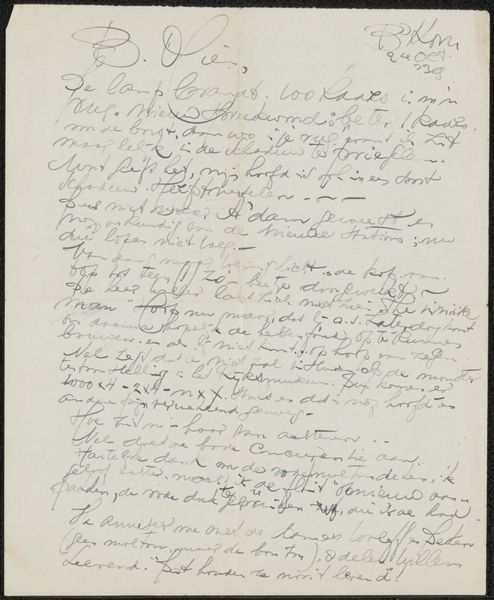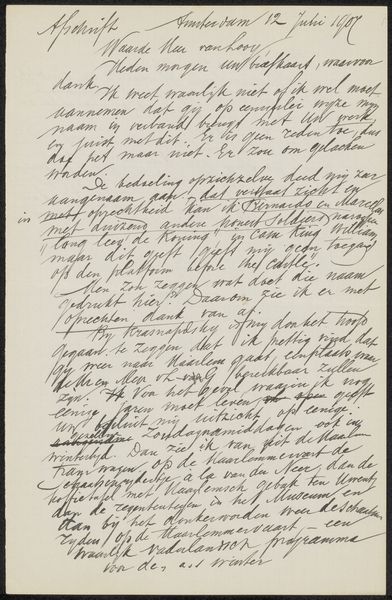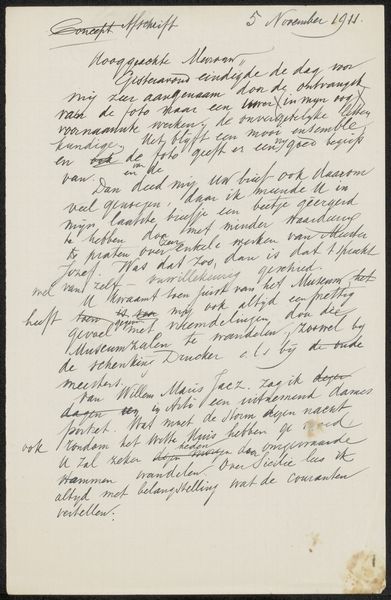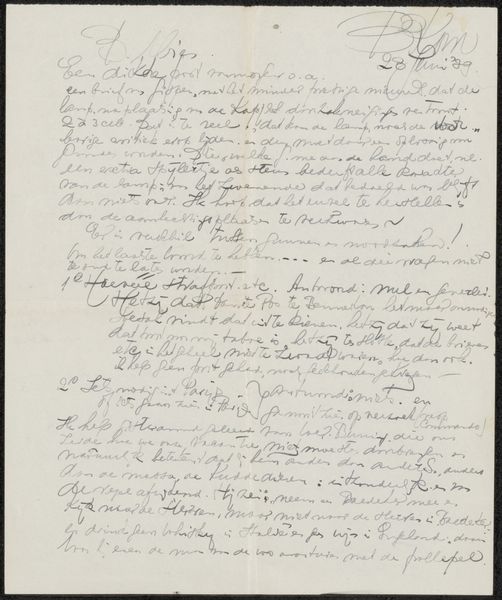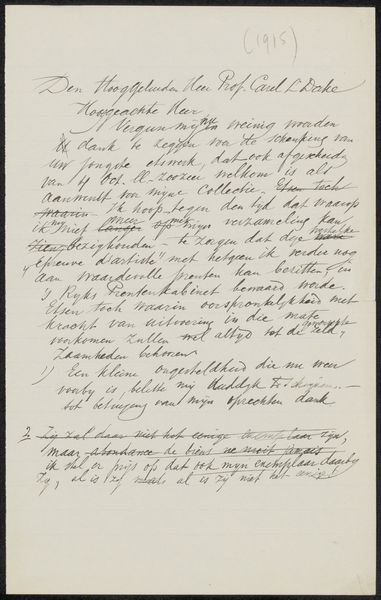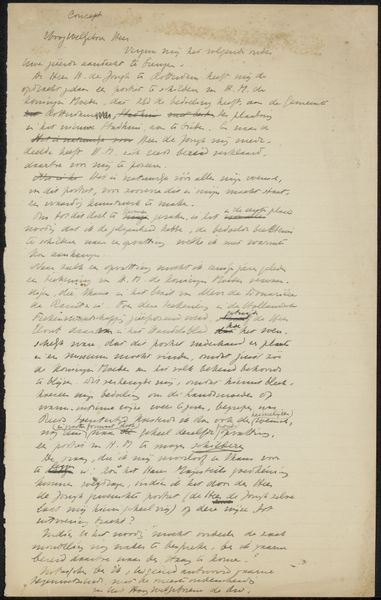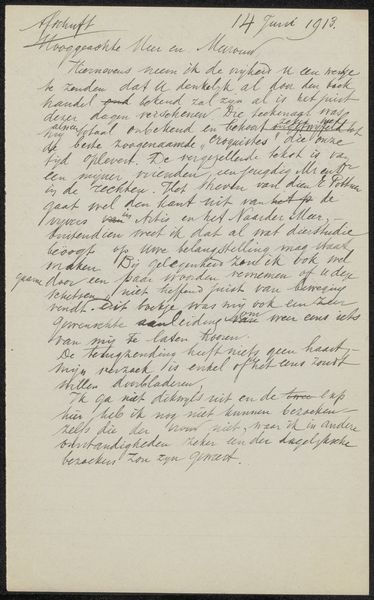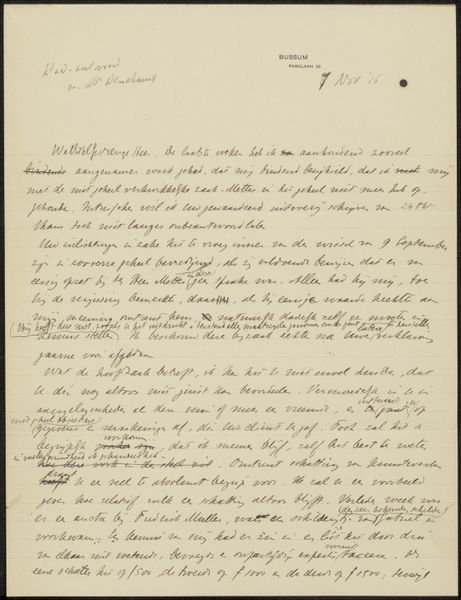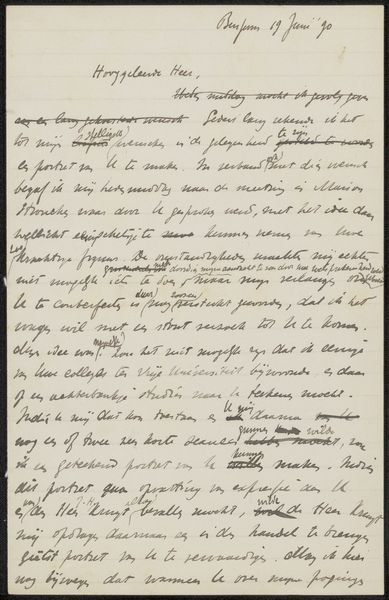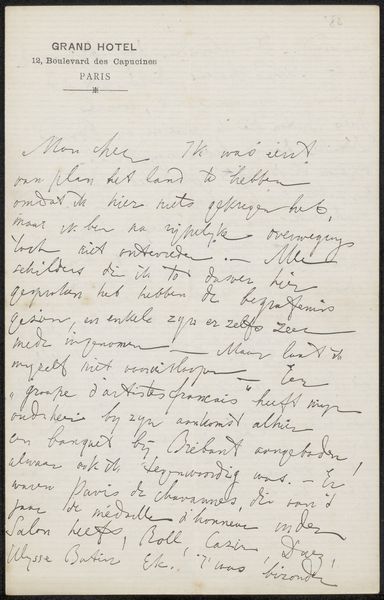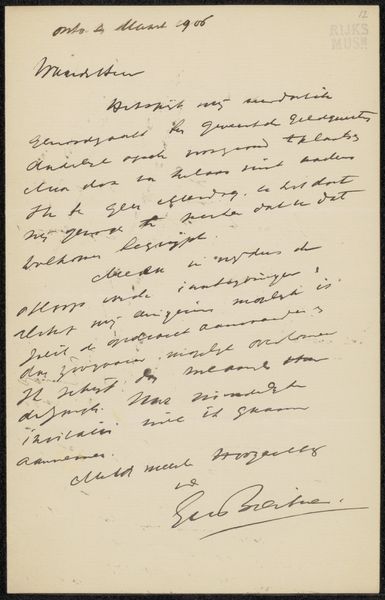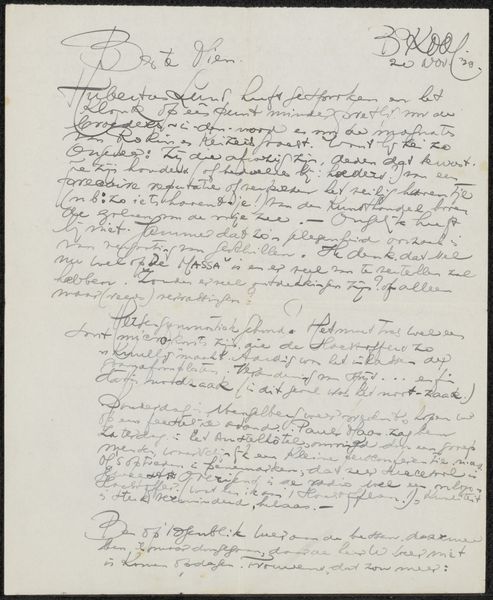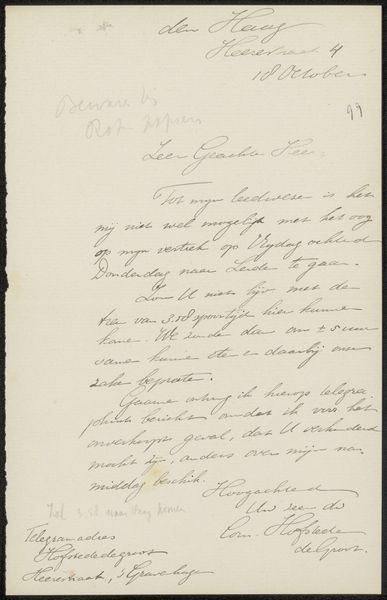
drawing, paper, ink, pen
#
portrait
#
drawing
#
dutch-golden-age
#
paper
#
ink
#
pen
#
academic-art
#
calligraphy
Copyright: Rijks Museum: Open Domain
Editor: We're looking at "Brief aan Max Dittmar Henkel," possibly from 1928, by Jan Knoef. It's ink on paper. The handwriting makes it look quite academic, but I wonder, who was it for, and why? Curator: That's a great starting point! I am interested in who received the letter. It would be good to understand the dynamics of the artistic network at the time. Were these influential people? Academics? This informs how we interpret not just the letter's content, but its social function. Was Knoef seeking validation, or perhaps lobbying for support? Editor: That makes sense. So the "who" matters as much as the "what"? I suppose these types of letters are artifacts of artistic circles and their public role? Curator: Precisely! Letters like this are not simply personal communications. They are documents that illuminate the mechanisms of art institutions. Understanding the institutional landscape allows us to see Knoef's position and motivations more clearly. Was he an established figure, or was he trying to elevate his position through these networks? It would also be useful to research more about Dittmar Henkel to assess his contribution to Dutch art. Editor: It is like examining who pulls the strings in the art world. I never thought about correspondence as such a significant factor, it's usually all about paintings in grand halls. Curator: Exactly. Recognizing these subtle yet pervasive networks is a more inclusive way to understand cultural history and appreciate the range of work produced. The context makes all the difference!
Comments
No comments
Be the first to comment and join the conversation on the ultimate creative platform.
